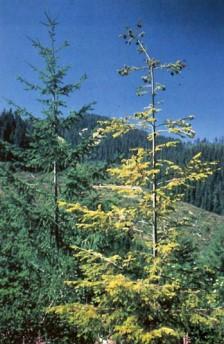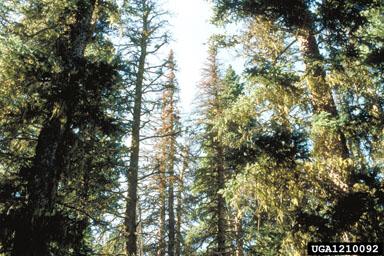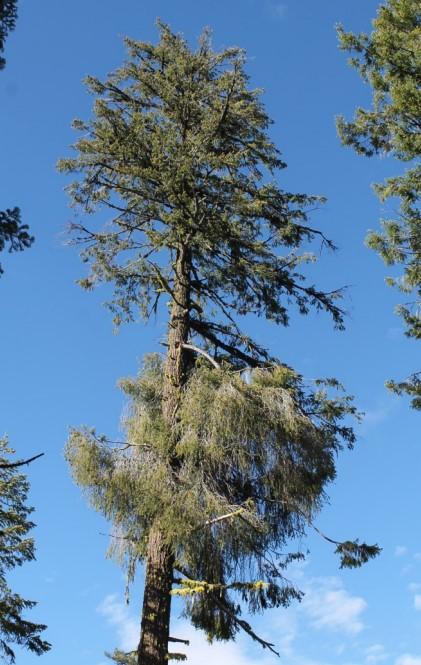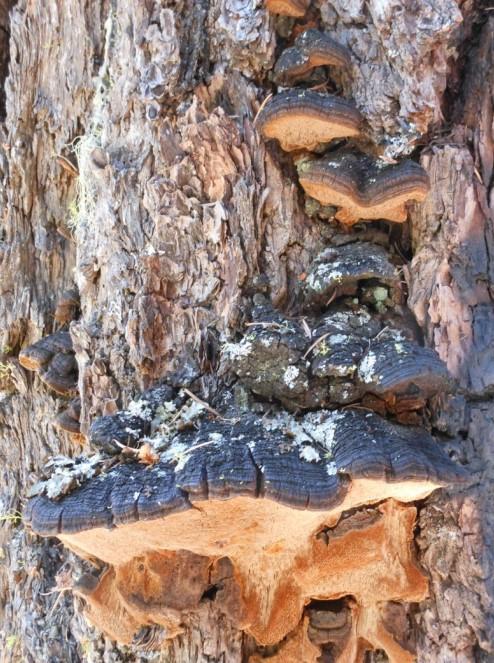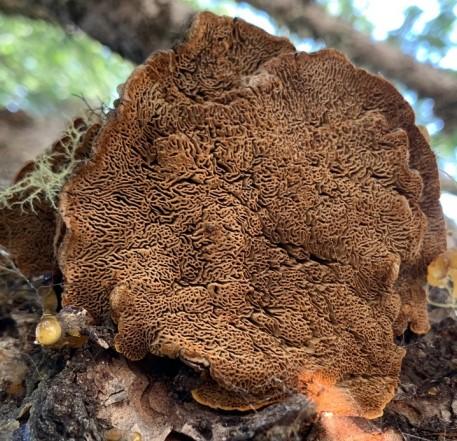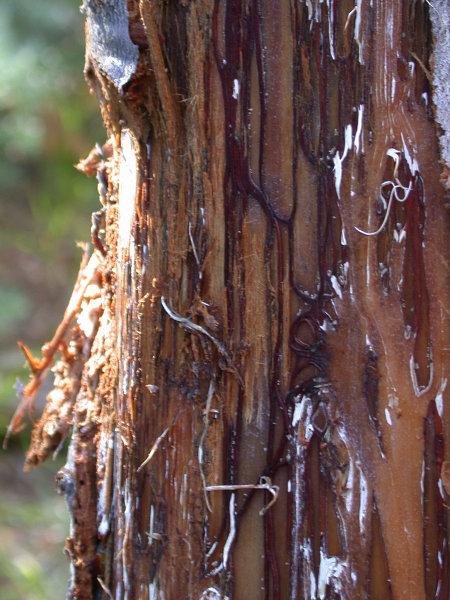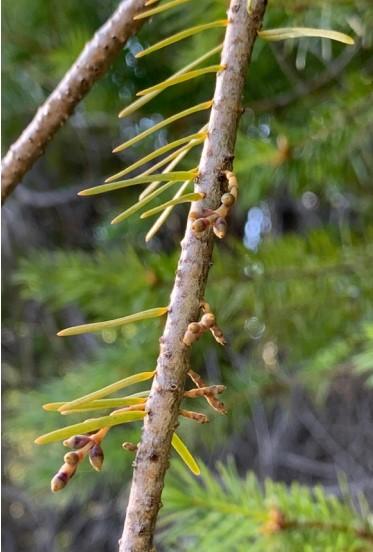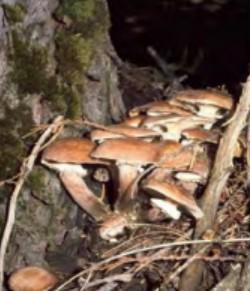Douglas-fir (Pseudotsuga menziesii)
Crown and Needle Symptoms
|
Symptom |
Possible Causes |
Reference Photo |
|
Branch flagging with red or yellowing needles over the course of one or two years. Top crown to whole crown death, often in clumps of trees. |
Flatheaded fir borer (Phaenops drummondi) AND/OR |
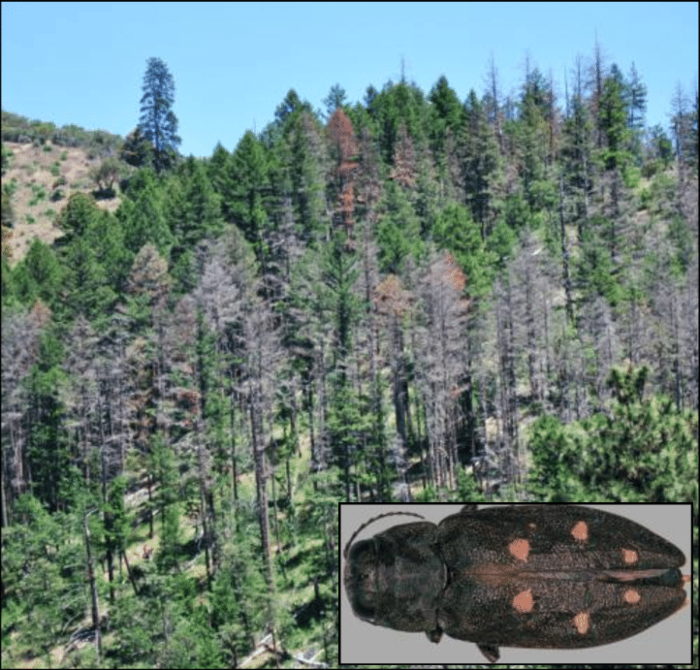
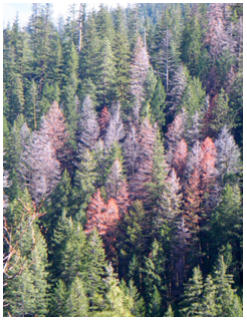
|
|
Thinning crown with rounded top. Stunted leader, branches, and needles. Needles yellowish green in some cases. |
Black stain root disease (Leptographium wageneri var. pseudotsugae) |
|
|
Crown yellowing, often with top-down decline and distress crop. |
|
|
|
Massive, drooping witch’s brooms across part or all of the crown, eventually leading to branch and eventually tree death in stressful environments or years. |
|
|
|
Branch flagging with red or yellowing needles over the course of one or two years. Top crown to whole crown death, often in small diameter trees experiencing drought or other stressors |
Douglas-fir Pole Beetle (Pseudohylesinus nebulosus) AND/OR Douglas-fir Engraver Beetle (Scolytus unispinosus) *see trunk and branch diagnostic table for distinction; management strategies are the same |
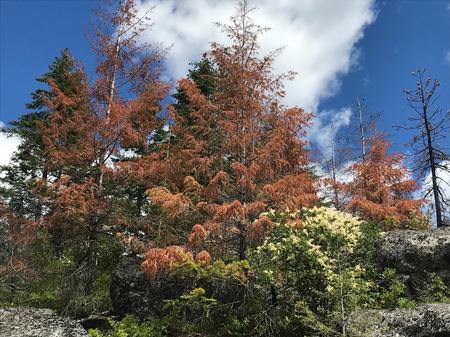
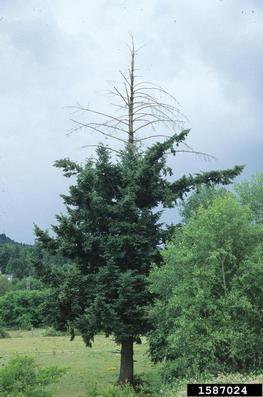
|
|
Reddening of needles and subsequent death of terminal and small lateral branches, especially on smaller trees at the edge of stands |
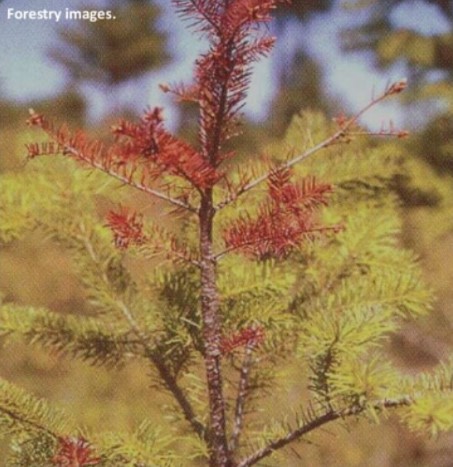
|
|
|
Dieback at the top of the crown, dead, hook-shaped leader in seedlings |
Phomopsis canker (Phomopsis lokoyae)
|
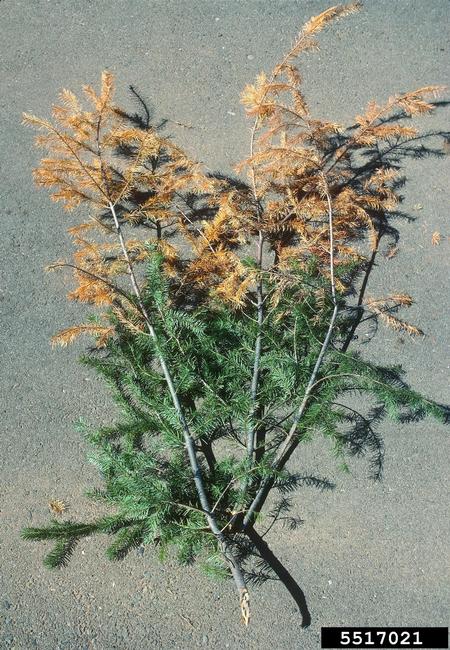
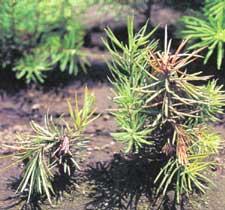
|
Trunk and Branch Symptoms
|
Symptom |
Possible Causes |
Visual |
|
Missing bark, 1/8 to 1/4 inch, oval-shaped exit holes without boring dust |
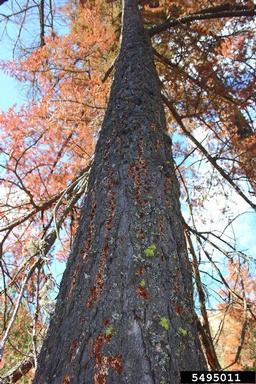
|
|
|
Butt swelling on older trees, presence of brown rot in heartwood when cored, presence of velvety, brownish layers of cushion-like fruiting bodies (often referred to as cowpie fungus) at base of tree or on lower trunk |
Velvet polypore/Cowpie Fungus/Dyer’s polypore (Phaeolus schweinitzii)
|
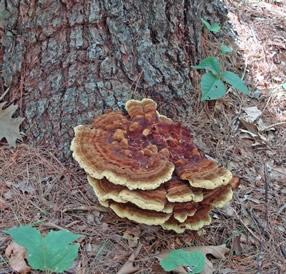
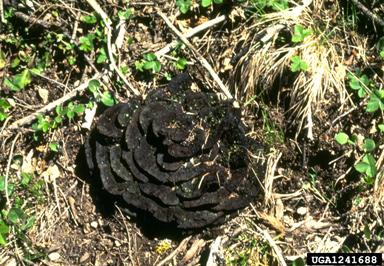
|
|
Conks with reddish-brown to black tops and golden, irregularly shaped pores below growing out of trunk near branch stubs or old wounds AND/OR punk knots with reddish brown fungal tissue near branch stubs or old wounds AND/OR Reddish-purple streaks in the heartwood followed by white pocket rot |
|
|
|
Resin/pitch on trunk, black staining on cross-sections of lower trunk |
Black stain root disease (Leptographium wageneri var. pseudotsugae) |
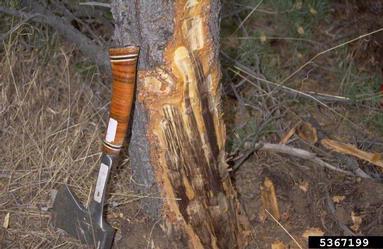
|
|
Black shoestring-like cords and white fans of fungal tissue running up the first few meters of the trunk (under bark), sometimes resin bleeds near base of tree |
|
|
|
Round or oval sunken cankers around dead or dying branchlets, sometimes with resin flowing from the canker and/or blackened bark on canker edges; dark pimple-like fruiting bodies may be present on stem |
Phomopsis canker (Phomopsis lokoyae)
|
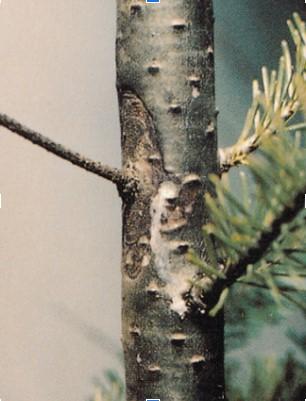
|
|
Swelling on main trunk or on branchlets, sometimes with small pale stems of parasitizing plant sprouting out of the affected area; notably bushier branching structure in branches around the swollen branch. |
|
|
|
Swelling or reddish-brown discoloration on small twigs, branches, or stems, and/or presence of entry and exit holes near dead branches, and/or presence of a mottled bronze and white weevil on outer bark. Larvae in L-shaped chambers in twigs and small branches |
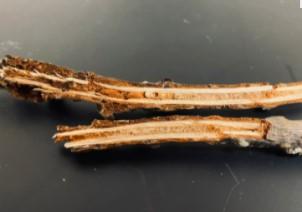
|
|
|
Exit holes on trunk or branches, larval chambers under bark that are arranged in two branches (one pointing upward and one downward) along a vertical central notch |
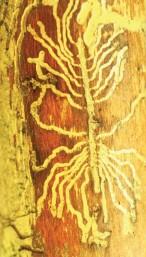
|
|
|
Exit holes on trunk or branches, larval chambers under bark that are arranged continuously along a central notch that has a distinct short chamber coming off one end of the central notch |
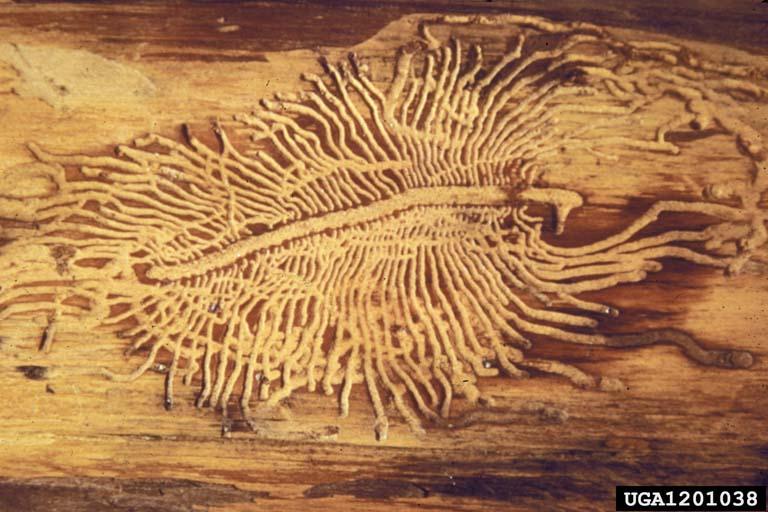
|
|
|
Exit holes with orangish tan boring material, and/or pitching on trunk; 5” - 10” long galleries with alternating groups of larval chambers coming off the central notch |
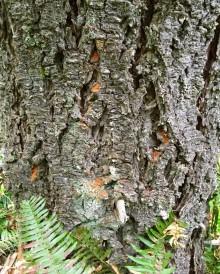
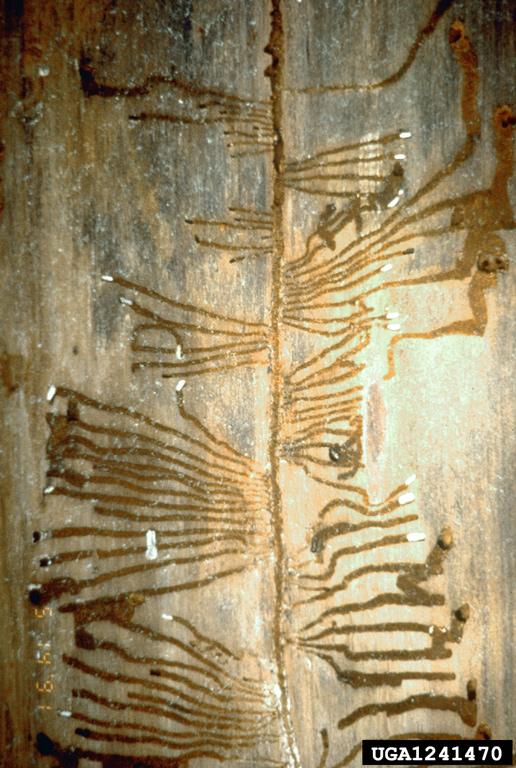
|
Root and Ground-level Symptoms
|
Symptom |
Possible Causes |
Visual |
|
Medium to large velvety, brownish (lighter on margins when fresh) layers of cushion-like fruiting bodies at or near base of tree or on lower trunk |

|
|
|
Black staining on cross-sections of roots, small, white reproductive structures |
Black stain root disease (Leptographium wageneri var. pseudotsugae) |
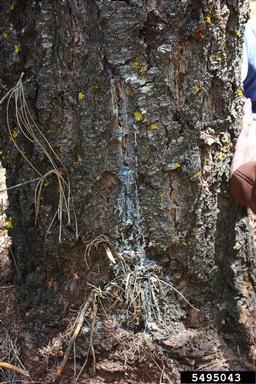
|
|
Clusters of tannish mushrooms present at the base or near trees, stringy yellowish to white rot with hard black plates present in the roots and lower bole of downed trees |
|

